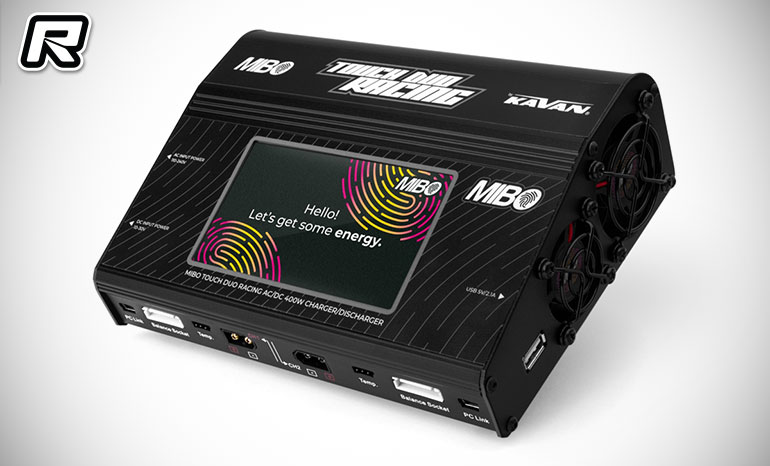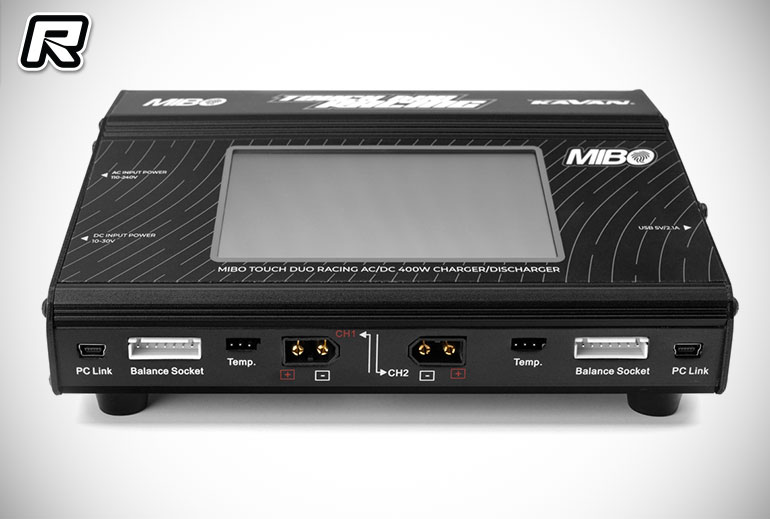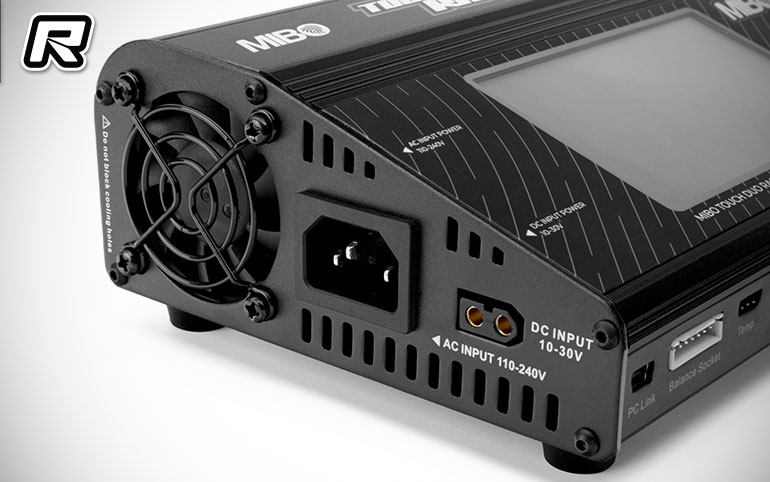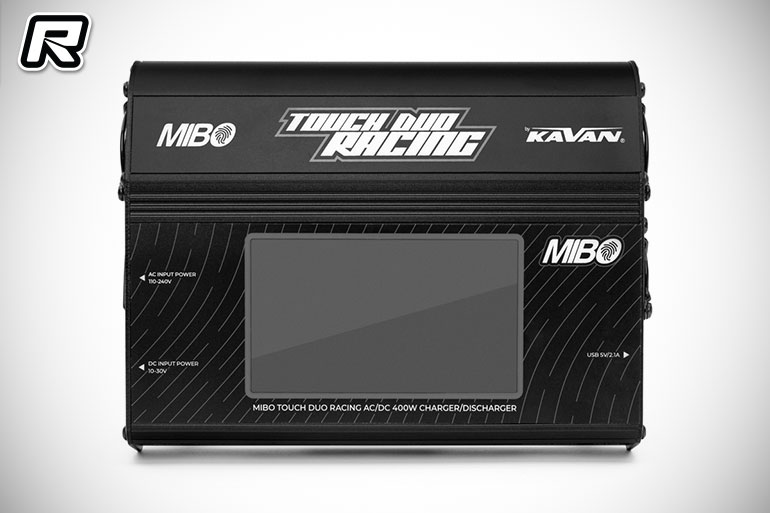MIBO Touch Duo Racing Charger

MIBO introduces it latest product, the Touch Duo Racing Charger. This AC/DC 400W unit is a dual-channel charger and discharger with a touchscreen display. It has built-in balancers with up to 200 W per channel for all battery types (NiMH, NiCd, LiPo, LiHV, Li-ion, LiFe and lead-acid). The charger is designed to be powered from a 100–240 V/50–60 Hz mains supply, a 12 V lead-acid battery (traction or car battery), or a suitable stabilised power supply. The charger is equipped with XT60 sockets in both channels and is shipped with 2 JST-XH service connector adapters allowing direct connection of power cables and JST-XH connectors of 2–6S LiPo packs. If you use packs with XT60 and JST-XH connectors, you don’t need any charging cables. You can use common Sky RC or RC System adapters to connect service connectors from other systems.

The MIBO Touch Duo Racing is equipped with intelligent and user-friendly software that offers many useful functions and has a wide range of helpful capabilities:
Program for new types of „high-voltage“ LiHV batteries with a terminal voltage for charging up to 4.35 V
End-voltage setting for charging and discharging lithium batteries (allowing the gentle charging that aviators like, or the brutal overcharging that „car guys“ are looking for
End-voltage setting for charging and discharging lead-acid batteries (allows all types of lead-acid batteries to be charged safely and optimally)
Measurement of the total voltage and the voltage of each cell (for lithium batteries) even without charging/discharging
MicroUSB port for firmware updates
When powered from a mains supply, both channels can also serve as a stabilized power supply of 0.1–28 V with an adjustable current limiter of 0.1–20 A (up to 200 W)
Charging of smart batteries for drones (3S LiPo, 4S LiHV, 6S LiHV)

Overview of basic functions and parameters:
Input voltage 10–30 V DC – for full use of the charger’s power, the power supply must be at least 24 V
Mains supply 100–240 V/50–60 Hz
For charging and discharging 1–15 NiCd/NiMH cells, 1–6 Li-ion/LiPo/LiFe/LiHV cells or 2–20 V lead-acid batteries
Adjustable charging current (0.1–20.0 A) in 0.1 A steps
Adjustable discharge current (0.1–5.0 A)
When mains powered, allows power to be allocated to charging channels (2x 200 W, 1x 400 W, 300 W/100 W, 100 W/300 W)
Max. discharge power of 25 W per channel
Automatic charge and discharge mode for NiCd, and NiMH with adjustable current limit
Charge termination with delta-peak automatic charging for NiCd and NiMH batteries
Lithium and lead-acid batteries are charged using the „constant current/constant voltage“ method
Adjustable sensitivity of delta-peak detection for NiCd and NiMH batteries
Adjustable end voltage for charging and discharging lithium and lead-acid batteries
Repeatable charge/discharge or discharge/charge cycling for NiCd and NiMH batteries, up to 5 cycles
Three charging modes for lithium batteries – normal charging, balanced charging, storage charging/discharging.
Termination of charging when the set time or delivered charge is exceeded.
Memory for 8 charge/discharge programs.
Measurement of the pack’s total voltage and individual cell voltage (for lithium batteries)
Measurement of the pack’s total internal resistance and individual cell resistance (for lithium batteries)
With the mains supply, the possibility of using both channels as a stabilised power supply with an output voltage of 0.1–28 V with an adjustable current limit of 0.1–20 A (max. according to the allocated power for the channel) to power other electrical equipment
Programs for charging intelligent drone batteries (3S LiPo 11.1 V, 4S LiHV 15.2 V and 6S LiHV 22.8 V)
Micro USB port for communication with PC and charger’s firmware update
USB power output 5.0 V/2.1 A for powering/charging mobile phones, tablets and similar devices
Backlit LCD touch screen with simple and intuitive menu and parameter display during charging/discharging
A number of text warning messages contribute to safe operation – incorrect input voltage, incorrect wiring, unsuitable battery or battery condition, incorrect polarity at the output
Protection against over-polarity and short-circuit at the output.
Compact aluminium enclosure
Built-in fans for forced cooling

Source: MIBO [mibosport.com]






